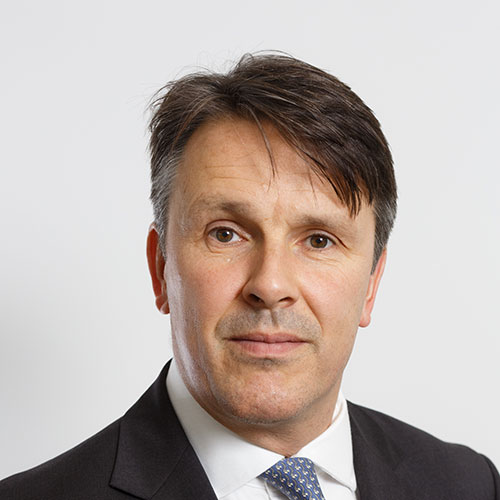Published September 22, 2022 | 5 min read
Key Points
- Markets have pivoted from a focus solely on inflation to concerns around a stagflationary downturn.
- Equities have had a bumpy 2022, but companies will need to start thinking about accessing the markets by the end of the year.
- High-grade issuers have had an easier time on debt markets, but there’s still an adjustment there as central banks withdraw support schemes.
- Companies are assessing the worst and best-case scenarios for economies, with the largest dependency the availability of gas in Europe.
- RBC currently predicts a central scenario, with a recession lasting two to three quarters, which would allow pent-up supply to help debt and equity markets bounce back quickly.
When 2022 began, the big issue facing equity and debt capital markets was inflation. The question challenging investors and capital-raising companies is how high could inflation go and how far would European and US central banks lift interest rates to temper it despite the impending recession.
Much of the rate rises we’ve seen this year had already been priced in by the markets, but there was still a sense that economies could avoid recession. Now the UK’s central bank has warned the country will certainly fall into recession this year, European Central Bank board member Fabio Panetta has warned of a looming recession in continental Europe and there are growing recession fears in the US, despite expectations that inflation may peak later in the year. The prediction that investors and companies need to assess is how deep and how long a coming recession may be.
“In an environment where there’s supply shortages everywhere, including the labour market, you need to think about whether labour markets will be heavily impacted and, as a result of that, will we get lots of layoffs and corporate bankruptcies,” said Peter Schaffrik, Chief European Macro Strategist at RBC Capital Markets.
“If the recession is very deep, then it’s difficult to come back from, but if that can be avoided, if we have a shallower recession, economies and markets can bounce back in 2023.”
“If the recession is very deep, then it’s difficult to come back from, but if that can be avoided, if we have a shallower recession, economies and markets can bounce back in 2023.”
Peter Schaffrik, Chief European Macro Strategist, RBC Capital Markets
Ups and downs on the stock market
Stock markets had a dismal start to the year, with the S&P 500 experiencing its largest first-half decline since 1970, down 20.6%, the pan-European Stoxx 600 down 16.6% and the MSCI World down 18%. From June, equities in the US in particular rallied, adding trillions in value, but market observers believe that this surge is more fuelled by hedge funds covering short bets to profit on earlier declines than any true confidence that the rally can last. Most consider this a “bear market rally”, typically experienced when the market becomes too bearish, but not destined to last as underlying sentiment doesn’t really change.
However, the current downturn does need to be put into context. All-time record highs were reached for many indices in January 2022, so the declines need to be viewed comparatively. Equity investors are forward looking and will be trying to asssess when the outlook will improve, so they will be vigilant and looking for any sign that suggests a bottoming out of negative data.
Despite the market drop, there are pockets of buoyancy in ECM issuance. European energy and energy-related businesses and UK infrastructure-related investment trusts have seen activity, Middle Eastern ECM volumes have been robust and VW has launched the IPO of its iconic car brand Porsche.
“Companies will need to start to think about whether or not they can access equity markets in an efficient way before the end of the year. But I think more significant IPO activity will take longer to come back,” said Duncan Smith, Head of Equity Capital Markets and Equity Syndicate, Europe at RBC Capital Markets.
“Companies will need to start to think about whether or not they can access equity markets in an efficient way before the end of the year. But I think it will take longer for IPO activity to pick up from the current modest levels.”
Duncan Smith, Head of Equity Capital Markets and Equity Syndicate, Europe, RBC Capital Markets
The new reality for credit markets
Outside of equities, the market for high-grade financial, corporate and SSA borrowers has never really gone away, says James Solomon, Director of DCM Syndicate at RBC Capital Markets. Issuers continue to enjoy good access in the high-grade space, but at the edge of the investment grade space, within the crossover between high-yield and investment grade, issuance has been tough. While inflation and interest rates are also an issue, a big question for credit markets is how the sector can adjust to raising funds with less central bank support.
“Investors and issuers have been grappling with what’s going to fill the space central banks used to operate in, what spreads and yield need to look like to attract new sources of liquidity and capital into the market,” said Solomon.
“Investors and issuers have been grappling with what’s going to fill the space central banks used to operate in, what spreads and yield need to look like to attract new sources of liquidity and capital into the market.”
James Solomon, Director of DCM Syndicate, RBC Capital Markets
This has led to a period of adjustment that excluded access for some companies, such as lower-rated real estate firms, earlier in the year. However, that’s changing as a new degree of pragmatism from borrowers when pricing deals comes in. And for core parts of the market, like banks, telecoms and utilities, liquidity has been consistently available.
The best and worst-case scenarios
As companies look towards next year, certainties are hard to find. Short-term fixing forwards point to a peak for inflation at the end of 2022 or start of 2023, but even if this pans out, the feedthrough will take time. Central banks have been hiking interest rates faster to try to tame inflation, but lately the question about where the end point in the rate hiking cycle is has been re-opened, specifically after the Fed’s Jackson Hole conference.
Many economies are likely to be in recession going into 2023, but it will come down to the depth of the recession. If it’s the middle of winter, there’s a gas shortage in Europe and GDP contracts sharply, central banks pausing rate hikes is unlikely to be enough to spur issuance. However, if GDP contraction is manageable and the labour market stays relatively strong, then a pause in rate hikes will be constructive.
“The turning point will be around December, when investors are making plans for 2023. That’s when they’ll be looking for the signs of the worst-case or best-case scenario,” said Schaffrik.
“The crucial indicator will be if there’s enough gas to go around, because no matter the price, if there’s no gas, then some industries will have to shut down. It will be a COVID scenarios all over again, but without the guardrails of the liquidity provided by central banks during the pandemic.”
The most likely future for markets?
There’s unlikely to be significant equity market issuance through the rest of 2022 given the level of ongoing uncertainty. However, as soon as some of the uncertainties ease and we see early signs that suggest inflation is peaking and rate rises can slow, providing the recession has not been too material, then ECM activity will pick up.
“Significant IPO volumes may take a little longer to return, but given there are a number of issuers and owners waiting for more stability, when that stability comes, as we have seen when we have exited prior periods of challenge, activity may well return quickly,” said Smith.
“If the geopolitical path leads to a significantly more challenging economic backdrop than we currently expect then the nature of ECM activity may include a high level of more ‘defensive’ issuance to help companies through a difficult period.”
“If the geopolitical path leads to a significantly more challenging economic backdrop than we currently expect then the nature of ECM activity may include a high level of more ‘defensive’ issuance to help companies through a difficult period.”
Duncan Smith, Head of Equity Capital Markets and Equity Syndicate, Europe, RBC Capital Markets
On debt markets, Solomon is already expecting an uptick in activity because so much issuance has already been delayed this year. There are redemptions coming up in late 2022 and early 2023 that need to be refinanced, regardless of the macroeconomic picture.
“There’s been an element of not wanting to be the first to enter the market at higher yield levels and wider credit spreads,” said Solomon. “But issuers can’t delay forever and now a number of bigger borrowers have come into the market, that has validated it for others.”
For Schaffrik, the scenario that avoids a deep and protracted recession is currently the most likely, but the dependency is the availability of gas to keep factories running through the winter. With this shallower recession, pent-up supply in both debt and equity capital markets will ensure a speedy ramp-up in activity.


